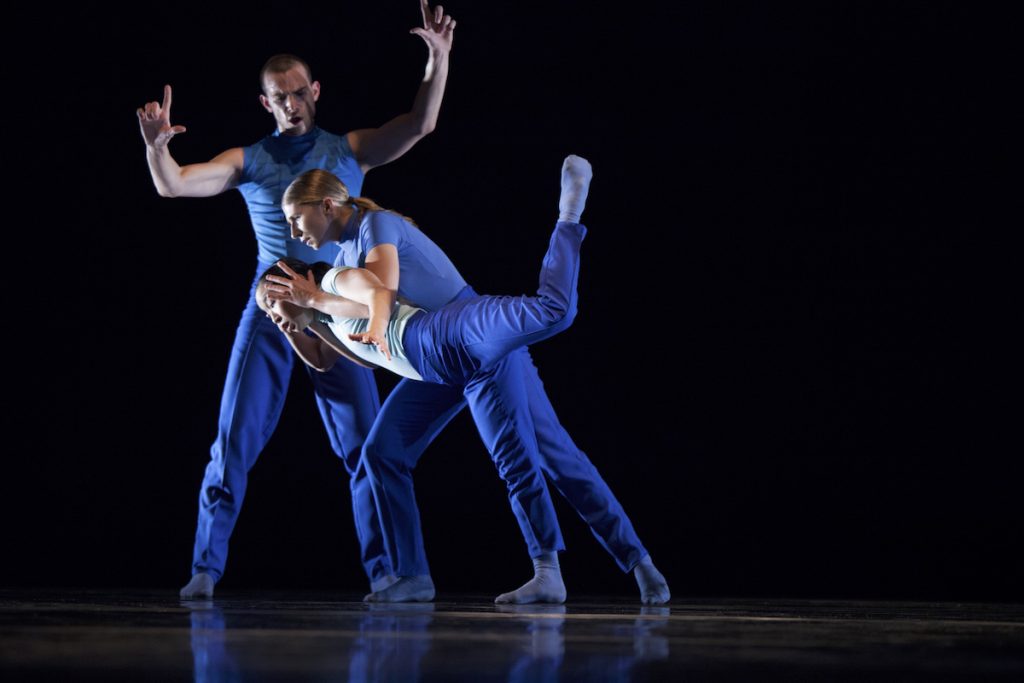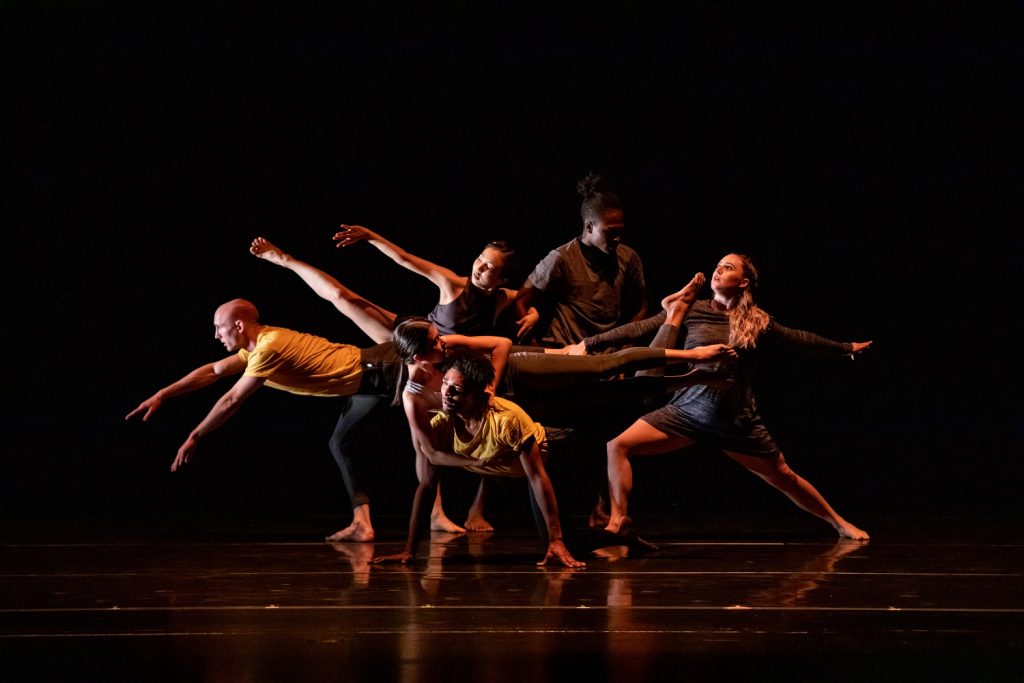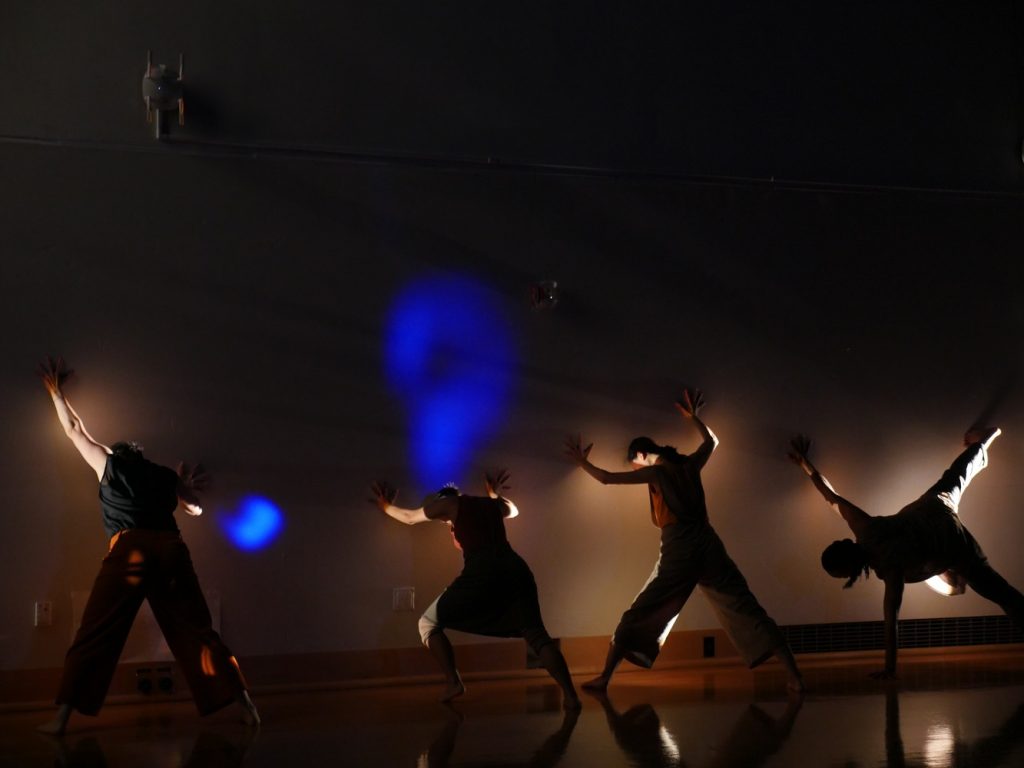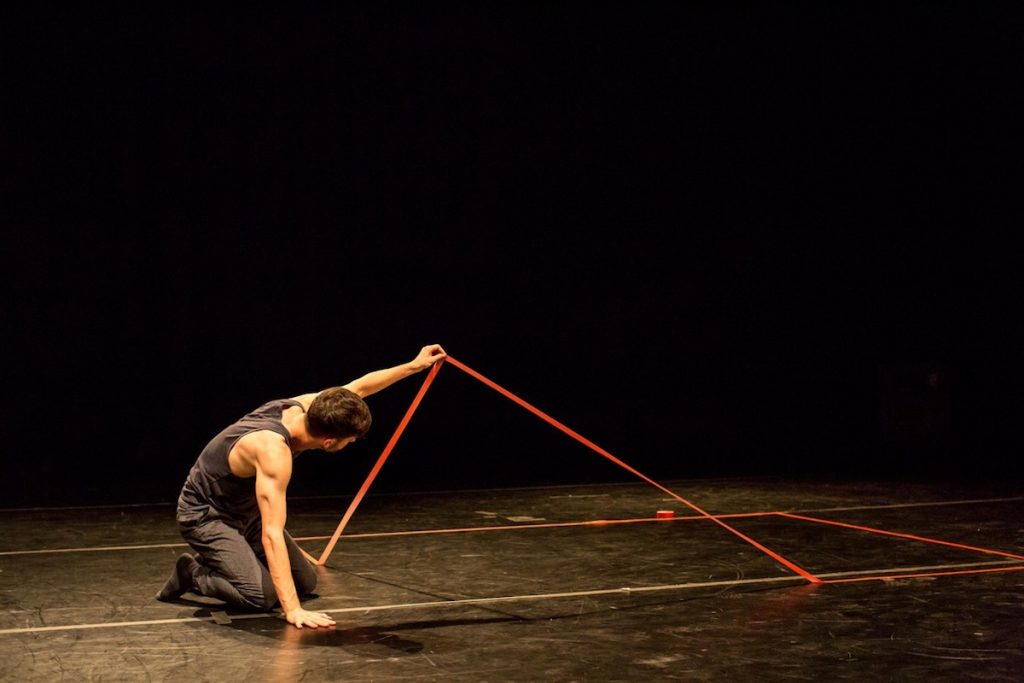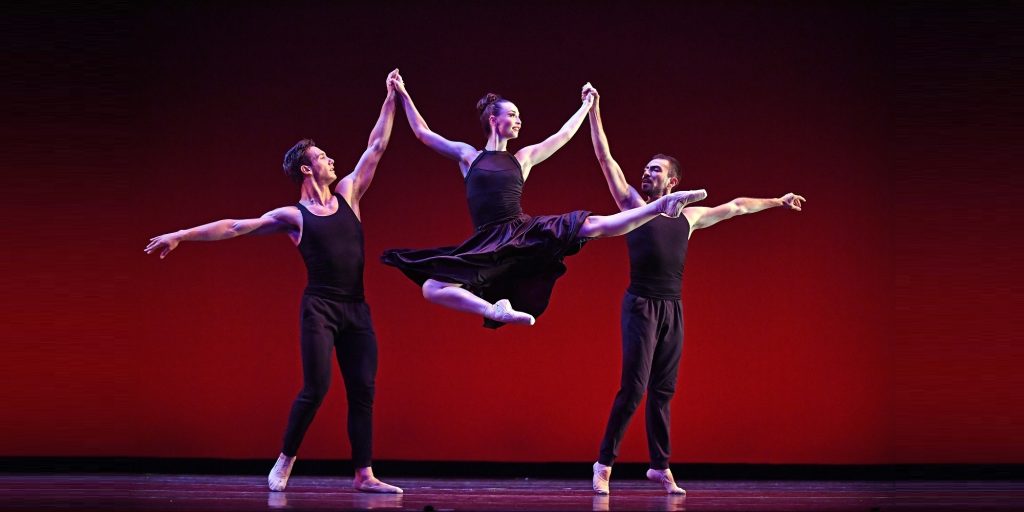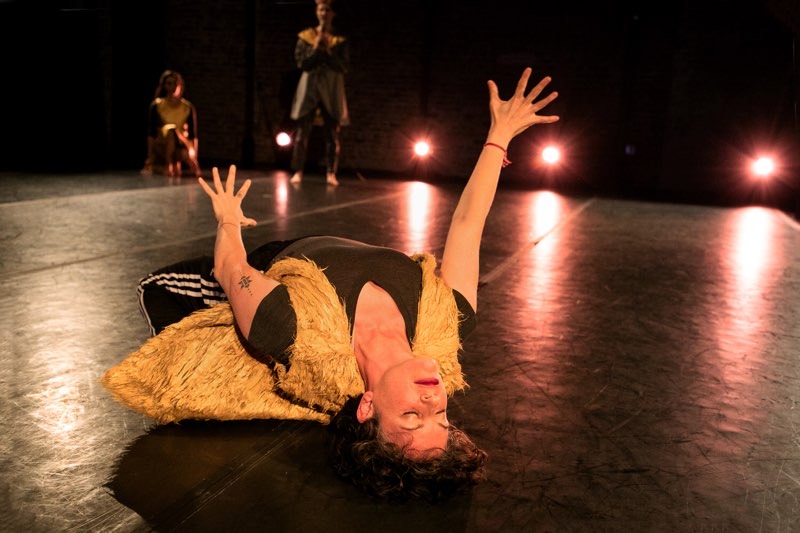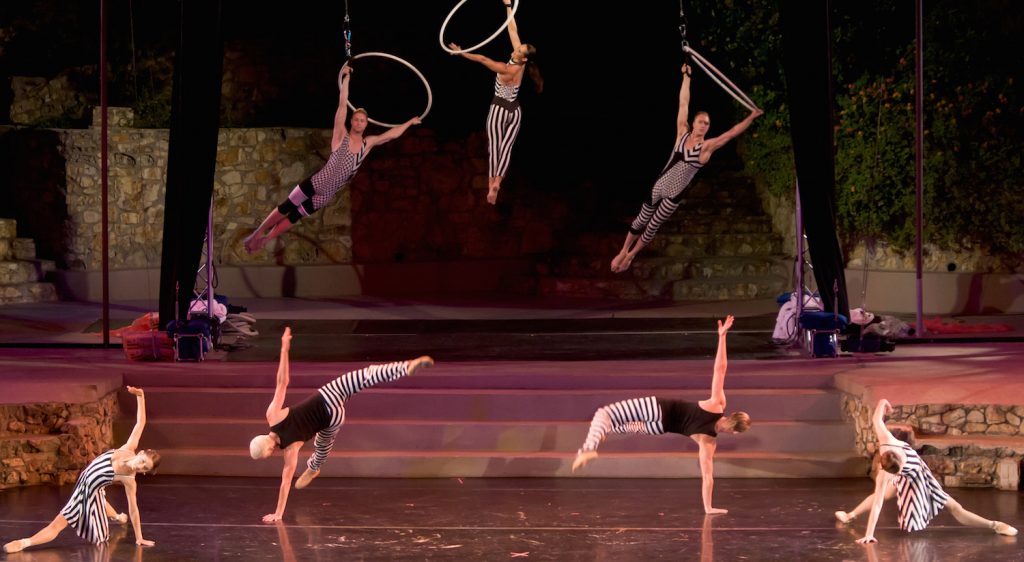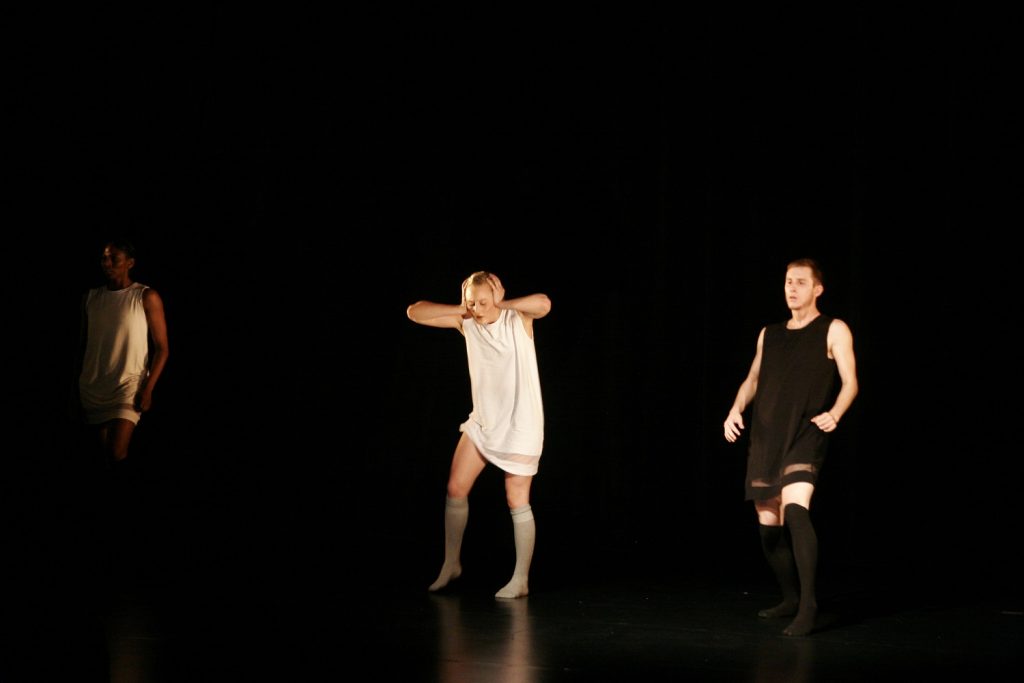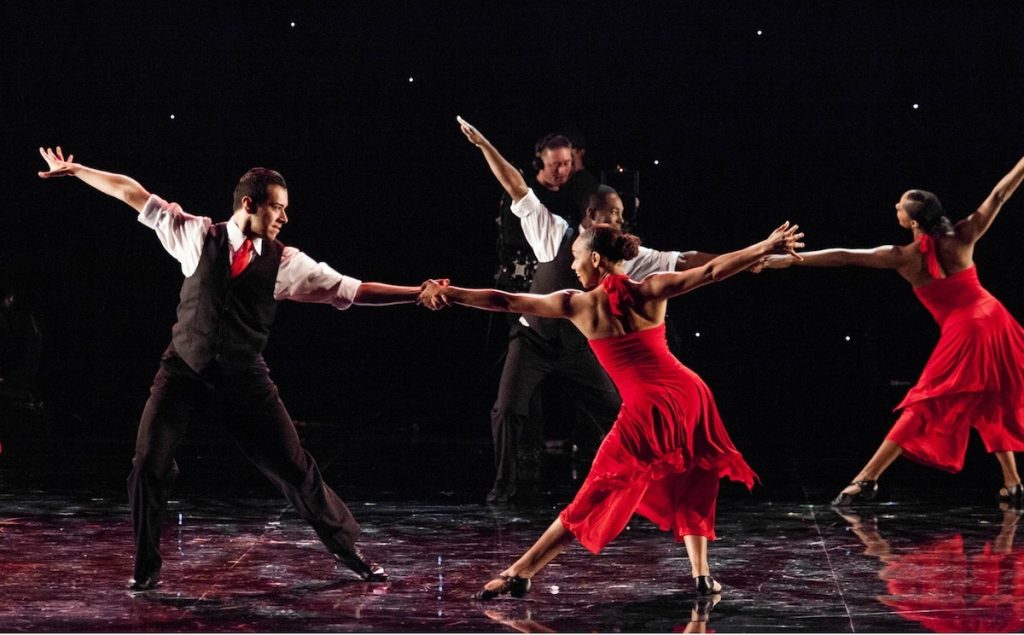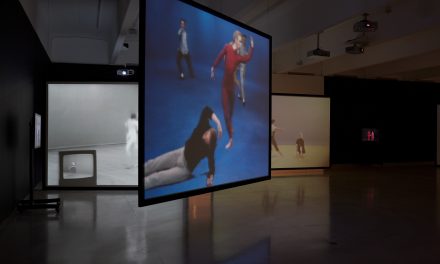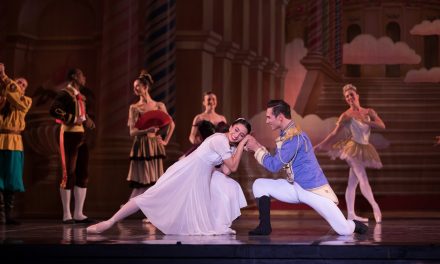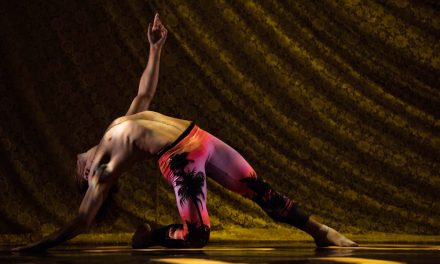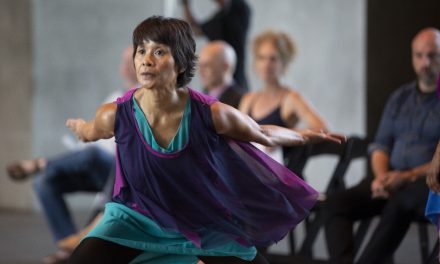It did not take long before I realized that I had to get out of what I call my pandemic depression (PD) and help myself, LA Dance Chronicle and the dance community by seeking out and writing about what companies and dance artists were going through and the effects of that experience. Not only how they were doing, but what, if and how they were beginning to create again. I asked the artists to respond to how long it took them to navigate through their PD and get to work – what followed their initial reaction to everything shutting down? As before, the answers varied, but I was heartened and inspired by how quickly many of them began making use of technology to create new work, reimagine work whose premiere was cancelled, or to re-introduce audiences around the world to works that they had recorded on film or video before the shutdown. Many stated that they discovered that they are reaching a wider and more diverse audience via Zoom, Facebook and Instagram live.
Thank yous go out to the artists who participated in this survey (in alphabetical order): Benita Bike (Benita Bike DanceArt Company), Deborah Brockus (BrockusRED), Nannette Brodie (Nannette Brodie Dance Theater), Victoria Brown (Dancer, choreographer, Co-Artistic Director of MashUp Dance Company), Joanne DiVito (Independent dancer, choreographer, writer, educator, and entrepreneur), Nancy Evans Doede (Nancy Evans Dance Theatre), Rosanna Gamson (Rosanna Gamson/World Wide), Judith “FLEX” Helle (Luminario Ballet), Kelly Hargraves (Dancer, choreographer, Co-founder, Executive Director and Artistic Director of Dance Camera West), Shenandoah Harris (Artistic Director of Psychopomp Dance Theater), Francine Kessler Lavac (Associate Artistic Director at Westside School of Ballet), Molly Lynch (Chairperson of the UCI Department of Dance and Artistic Director of National Choreographers Initiative), Victoria Marks (Choreographer and Filmmaker), Achinta McDaniel (choreographer, Artistic Director of Blue13 Dance Company), Andrew Pearson (dancer, performer, educator, founder of Bodies in Play), Leigh Purtill (choreographer, Artistic Director of Leigh Purtill Ballet), Louise Reichlin (choreographer, Artistic Director of Los Angeles Choreographers & Dancers), Sarah Rodenhouse (Dancer, choreographer, Co-Artistic Director of MashUp Dance Company), Janet Roston (Choreographer, Artistic Director of Mixed eMotion Theatrix), Laurie Sefton (Choreographer, Artistic Director of Clairobscur Dance), Alexx Shilling (Choreographer, dancer, filmmaker, Artistic Director of Alexx Makes Dances), Donna Sternberg (Choreographer, Artistic Director of Donna Sternberg & Dancers), Sophia Stoller (Dancer, choreographer, teacher, and Artistic Director of Iris Company). Micaela Taylor (TLC Collective), Pat Taylor (JazzAntiqua Dance & Music Ensemble), and Tam Warner (Choreographer, Director, Writer).
“I started thinking about creating new work in May and started doing a few rehearsals via Zoom in June, Sefton said. “I am now working on more projects at once than ever before. Right away it seemed that so many dancers and companies were creating work for film and other online platforms. I decided not to jump on the bandwagon but take some time to consider what I would do next. I am now in the process of three unique projects. A new live site-specific work created for socially distanced dancers, with audience members in a safe place.”
Sefton talked about the open freeways and clear skies that allowed one to see the vistas around us and how it reminded her of LA in the ‘80s. “The sky I noticed had returned to the color I remembered from my childhood. This gave me hope for the environment and our planet. I had difficulty breathing and terrible heart palpitations – my first ever experience with Anxiety Attacks. They have become my friend ever since. I swing often between them and a deep sense of peace.”
It is true that for the first weeks following the shutdown that the Los Angeles skies became crystal clear and one could see the Santa Monica Mountain range that even though nearby, are often obstructed by smog or haze. The highway patrol was busy during that time as well, chasing and giving tickets to drivers who were taking advantage of the empty freeways to race at excessive speeds.
DiVito wrote that for a while she paced her apartment in something that resembled a fog “…..waiting for the next shoe to drop…I hadn’t yet re-imagined what I would do…and how I would live. How long I would live on subsistence pay…whether I would continue to teach or not, what I needed to learn to finish off the semester. Would I have to go into my life savings? I knew I just had to stop walking in circles! So, like a good parent, I made myself sit down, look at my piles of unfinished projects one by one, figure out which ones I could do without the help of the world.”
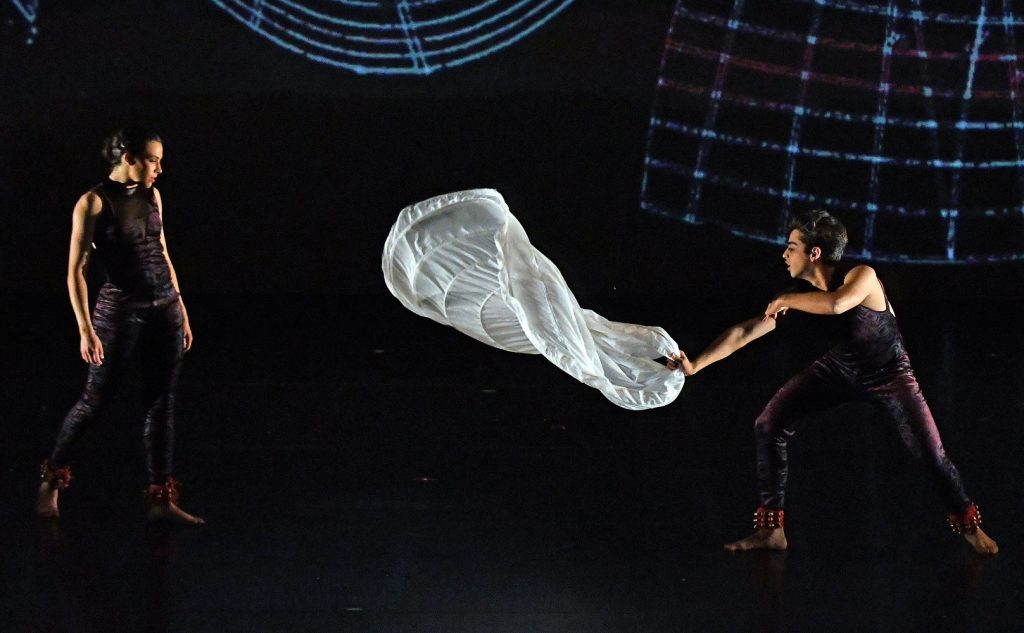
Blue13 Dance Company performing the world premiere of “Terpsichore in Ghungroos, Dear Mr. Khan” by Artistic Director/choreographer Achinta McDaniel – L-R: Jackie Buckmaster-Wright, Jainil Mehth – Photo by Kevin Parry
“I definitely faced a period of paralysis for about 2 weeks, not really knowing what we were facing and how deep of an impact it would make, and how long we would be unable to dance, work, simply go to the grocery store,” said McDaniel. She soon overcame this apathy, however, and her company began teaching weekly classes and holding company rehearsals on Zoom, Instagram and Facebook. “We created videos for YouTube and Vimeo and continue to work on digital projects. The pandemic has ignited some new creative inspirations and forced us to rethink success as a dance company, and for me as a choreographer and educator.” McDaniel added that she has returned to two other artforms that she loves, drawing and writing.
It was slow going for Brockus. She watched as other artists were trying to get moving, but for the month of March, she simply stopped. “Slow! I could feel the weight of what had hit us and the total unpreparedness of Government and felt that people would not react well,” she said. “It was rainy and I just pretended it was a blizzard and shelter-in-place as the world collapsed – big question was – will we all be like Italy and New York City.” Brockus applied for financial assistance wherever she could and shared this information with her colleagues through Zoom training workshops on AB5 (California Assembly Bill 5), PPP (Paycheck Protection Program), and digital world. “May was closing out my grants by shooting Zoom classes. June was protest month , closing out grants, but got a bit creative – we shot a bunch of solos in the studio and collaborated with Dance on Camera West to move our show that was to be a part of LADF (Los Angeles Dance Festival) from the Stage to the Screen showing it for a week.” That was the beginning of Brockus streaming other events that she had put together for LA choreographers. “Giving artists a chance to participate in their art is in some way something they all appreciated.” She added. “I moved to raising our visibility and voice for Dance and art in general in society moving forward.”
It was extremely challenging for Reichlin who said that she went into shock. For the first time in her 78 highly active years, she was existing but not doing what she loved – making dances. “I felt terrible that all the dancers in my company (we use independent contractors with contracts through June 30) who were counting on a certain amount of money coming in and we were not going to be teaching or performing, so I started doing applications for funds so that I could pay them anyway. I applied to as many as I could find for artists for the company, and on April 5 applied to the Disaster Loan Assistance (EIDL) of the SBA as I had learned they would grant $1000 for each 1099 we sent out up to $10,000.”
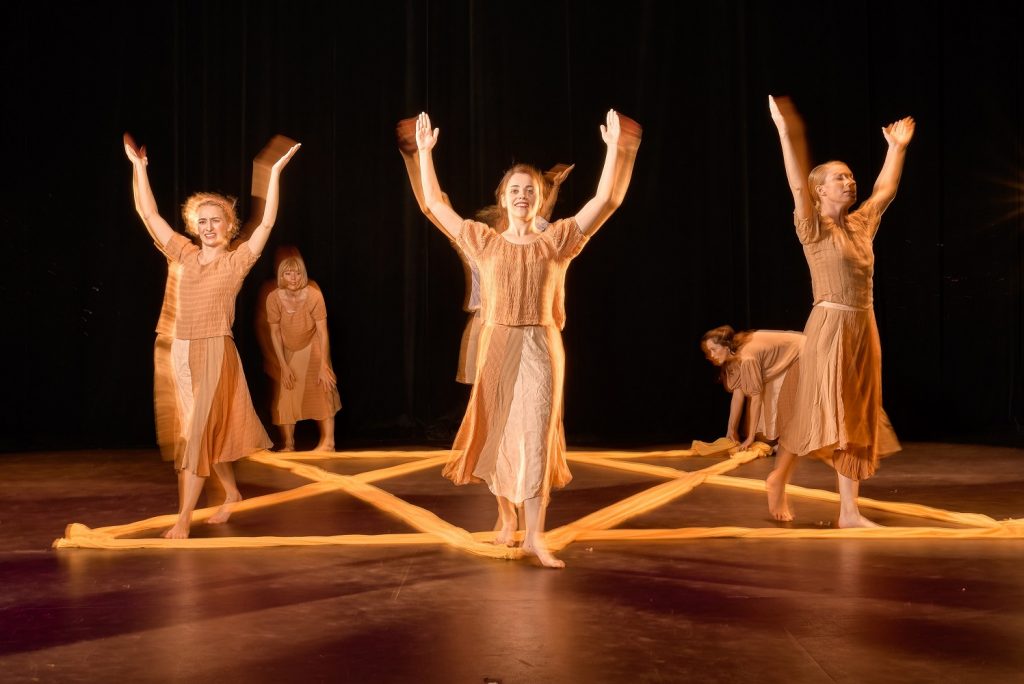
Los Angeles Choreographers & Dancers/Louise Reichlin & Dancers – “Jewish Child’s Story Part II” – Photo by George Simian
After LA’s major ordered businesses to close in mid-March, Purtill shut down her classes the very next day. “ I started offering a daily class at 11AM that I livestreamed through YouTube. It was free to anyone who wanted a class, with a modest request for donations. It helped me tremendously to have a class and a connection to my students every single day. I know it helped them too.”
For Marks, her life did not slow down. If anything, it became more hectic. “Working inside the University, nothing actually slowed down. In fact, everything moved into double and triple time as the academy tried to figure out what to do. Committees and more committees, everyone wondering who was the “decider.” There were no precedents. Students needed support, emotionally and psychologically. Faculty didn’t know how to transition to remote learning. We didn’t know how to continue our creative work. March quickly led into May and things exploded.” Marks wondered what to do about grading when students and faculty were in the streets protesting. “Why would a course even matter in the general scope of things? The university was no longer the university as we knew it, but what part of its promise could be preserved? That’s how action unfolded for me,” She said. “I can no longer separate the C19 Pandemic from racial inequity. I am a different person now, than I was a couple of months ago”.
Hargraves altered Dance Camera West’s online screening schedule, moving them up by several weeks. She added that she “then created a separate program to fulfill our LA Dance Festival booking.” Within a week Brodie taught herself how to begin Zoom sessions with her company to train and “ keep connected and motivated.”
For Pearson, his method of response changed from week to week. “My daily endurance is much less than it used to be and navigating the overwhelm of everything means some days I just have to unplug. I’m fortunate to still be working for both of my schools, but it often means after the work day is done I have no energy left for my own creativity.” Prior to the pandemic, Pearson’s time was filled with taking classes, teaching, administrative work, rehearsals and with what all dance artists love to do, going to concerts. This was sometimes all done in one day. “Now, it’s a good day if I have enough bandwidth for two of those things,” He added. “I’ve found myself more interested in being in “input mode” by taking classes, reading, and consuming pandemic-made content than being in “output” mode.”
Others, like Stoller, could not afford to spend time feeling sorry or depressed but knew that they had to immediately take on the process of problem-solving. “Because decisions needed to be made quickly for the start of our rehearsal process, which had been on the calendar for months and was scheduled to start just a few weeks after things started closing down in LA,” She wrote. “My initial gut reaction of shock, disbelief, and fear quickly transformed into adrenalized determination. The show must go on! So, we decided to start rehearsals with the cast on Zoom. As time went on, it became clear that an in-person performance in August would not be possible, and the start of our in-person rehearsals felt further and further away. Our momentum slowed, but we continued rehearsing on Zoom until the beginning on July, completing rehearsals of the entire script without blocking or movement.”
Harris also took immediate action. She began by searching ways to connect and begin discussions with colleagues in other arts organizations to share ideas for what to do next. “My main concern was the stability of the dancers in my company. I connected with DRC and Arts for LA (where I know people who work in those organizations) and figured our grant/ emergency relief and how to utilize unemployment as a freelancer to pass on info to the other dancers and tech people on my team,” she said. Harris then began teaching online classes. She is also a certified Personal Trainer and Corrective Exercise Specialist. “I began teaching two days a week of strength and conditioning for dancers/athletes and one day a week of movement /dance class on Zoom.” Though challenging, Harris found these classes successful.
Like Stoller and Marks, Lynch and Doede immediately acted. They had to because both worked in schools. Lynch at UCI as department chair and Doede on faculty at LaSalle and responsible for her company of dancers. “We had 1 week (spring break) to get online and be trained to teach remotely for spring quarter. It was a crash course to try and figure that out,” Lynch said. “How do I teach ballet through Zoom? How do I teach Arts Management via Zoom?”
Doede took a business approach. “We took action immediately, marketing-wise, letting our supporters know about our rescheduling, posting on our Facebook page and Instagram, and having online meetings between Executive, Artistic and Board components to try and sort through our options. By the first part of April, we had committed to doing an improvisational response to COVID-19 with each of us recording about a minute’s worth of movement and then passing it down the line, each beginning where the previous dancer had ended.” Doede’s daughter and company member Ashleigh edited the recordings, transforming them into a five-minute video on the company’s Facebook page and website.
“I think what I discovered about myself is that I need to be generating creative work to feel grounded,” Roston said. “I took about two weeks to be stunned by everything and then I started creating video work. I really haven’t stopped. I don’t think it’s denial, I think I feel better and more hopeful when I’m making movement in some way.” Lavac, on the other hand, was in denial and went into hibernation. “Our social media manager, Jewels Solheim-Roe, got us online right away — and I think I was one of the only teachers who didn’t teach online immediately,” She said. “I needed time to process, and I knew our dancers were in great hands with other teachers.”
A few had difficulty remembering what all transpired during those first couple of months. Sternberg wrote that she was busy staying in contact with her company members and rearranging schedules because performances were being delayed, postponed and finally cancelled. “I felt a great responsibility to my dancers, to try and do whatever I could to help them financially so a lot of my first efforts were spent navigating the financial waters with the PPP program, which ended up taking a lot of time with no result because I could not find a financial institution to apply under,” She said. “There seemed to be so many issues to confront all at once – looking for financial assistance for my dancers, finding out about unemployment so I could help them (and myself), combing through grants, etc. It was exhausting.”
Shilling reminded me that many of the college and university students were forced to vacate their campus dormitories and seek alternative living arrangements. This was not only unsettling, but financially challenging. She therefore directed her energy and focus into her teaching to help her students remain calm and to hopefully stay positive. “Creativity requires openness, the cultivation of safe and brave spaces where we can let go into possibility, imagine and create worlds together and see things that aren’t always immediately in front of us. How can we do this in isolation? Through a computer screen?” She wrote.
“We do not have any action at the moment as all roads lead nowhere currently.” Helle said. “There is an additional problem besides no possibility of rehearsing/performing together, which is the consequences of AB5 on the local nonprofit concert dance community, including Luminario Ballet, which hires all dancers and staff as independent contractors.” For many, if allowed to continue as written, AB5 will prohibit companies who contract dancers on a gig by gig basis to create and produce work in the manner that they do now or to hire as many performers. Without extra funds to pay the extra payroll taxes and fees, some companies may be forced to fold. “That’s a whole other catastrophe.” She added.
Sadly, dancers and dance companies are used to living and working on a shoe string budget, often working one or two other jobs while rehearsing and performing in order to pay rent and put food on the table. Gamson said that she and her company were trying to figure out an alternative plan to the one that they had prior to the shutdown. She wanted to keep her company members working by transforming her next project, Diving Into the Wreck, into “an on-line game with a collaborating digital artist in Seoul. “(We are) participating in a (completely unrelated) dance festival SIDFIT, and Battery Dance Festival in NYC with videos; broadcasting existing videos to meet our grants obligations and devising a participatory dance event that will be in the desert near Lancaster September 1st in connection with an artist’s installation (sadly, this event was postponed due to fires in the area). We also have been doing social media takeovers and trailers with our performers for REDCAT and ArtPower at UCSD where we plan to perform in 2021.” Gamson wrote.
“After a couple of weeks of rethinking what this work could possibly turn into, I started to take action and find new ways to create.” Michaela Taylor said. She dove into creating new dance films and was thinking of turning her work titled ‘90Sugar into a film but remembered that her company members were not all living in the same city. “I started to simplify and teach class from Instagram. The really allowed me to stay connected to our community and physically stay in shape. It opened my eyes to see the power of the human even if through a screen.”
“I did not want to immediately jump into presenting something online. It is very important to me that we maintain a certain standard of presentation and that we continue to express our aesthetic and philosophical grounding, as well as a sense of community and connection as we create and present virtual projects.” Wrote Pat Taylor. JazzAntiqua Dance & Music Ensemble did, however, premiere The Movement in the Music, a digital Jazz dance showcase in May 2020. “JazzAntiqua was originally contracted by DCA (Department of Cultural Affairs) to present this showcase as part of the Jazz Caravan that would have taken place in April for Jazz Appreciation Month at venues throughout Leimert Park Village. So, we curated archival works, and new works created by the company members and guest artists adhering to the current social distancing restrictions into a virtual concert.”
JazzAntiqua was also able to use funding from the CDA and National Endowment of the Arts and to use Zoom to complete a two-week LEGACY teen Jazz Dance intensive. It included daily technique classes and rehearsal making use of one studio location, a video project week. The finished project is in the process of being edited together. Pat Taylor said that they have other projects in the works such as the company’s annual The Movement in the Music. The master classes will be taught via Facebook live and Instagram live.
It was inspiring to read the response to my queries and to see how resilient these artists are. Yes, they had similar human reactions that the rest of the world had when the pandemic struck, but they did not live in fear for long. Being used to diversity and struggle, these dance artists reinvented themselves yet again in order to continue doing what they love most, dancing, making dances, teaching, and performing.
Next week in Part III, I will investigate exactly how these artist reimagined themselves (or not), their studios and their companies.
To read Part I, click HERE.
Written by Jeff Slayton for LA Dance Chronicle.
Featured image: Amber Adams – UCLA Ballet Teacher and Owner, LA Dance and Movement – Photo by Ethan Sigmon


